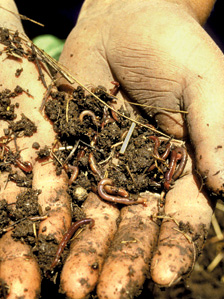 |
| I love fermented beverages like kombucha, kifir, and of course hard apple cider, but the one I'd choose when every cell in my body screams HYDRATE ME, is Rejuvelac. |
What's so Great About Rejuvelac?
Made of sprouted and slightly Fermented wheat berries, nothing beats rejuvelac for it's ability to hydrate, refresh and restore. With a slightly tangy lemonesque flavor its easy to inhale an entire glass when you really need it. But beyond crisp deliciousness the rejuvelac vitamin profile astounds me. A glass contains the entire B-complex, C, E, and K vitamins, as well as probiotics and digestive enzymes. To summarize- It tastes great, feeds you vitamins, hydrates you and heals your guts all at once!Other commercial drinks billed as thirst aids and vitamin waters, fall short and cost a bit more. They contain lab produced vs naturally occurring vitamins, and lack probiotics and enzymes, while delivering the hydration and a stew of sulfates or High Fructose Corn Syrup.
Given all this- I'm sure the only reason you are not a daily rejuvelac drinker is because you've never heard of it and /or you have no idea how easy it is OR you've tried and the result smelled like feet. Well I'm here to help. Following is a step by step guide complete with pictures on how to brew your own rejuvelac successfully every time.
Foolproof Rejuvelac 6 step process:
 |
| 1) Get the grains. I use soft wheat berries but Rye works as well. |
 |
| 4) As soon as they grow little tails- this size or longer- put them in a blender and blend. |
 |
| 6) Wait a few days and smell it. If it smells like feet throw it out, If not, pour a glass on ice and ENJOY! Refrigerate the rest and keep drinking while it still smells good. |
Process Review:
- Source
- soak
- sprout
- blend
- wait
- and enjoy
The first time I made rejuvelac trying to follow Sally Fallon's recipe in Nourishing Traditions, the result was HORRIBLE. It smelled and tasted like old socks. What's worse is that the raw food forums I visited to figure out why said it was normal, that in order to get the benefits of nutrition sometimes you have to suffer taste. Yeah right! The nose knows! I've learned to trust it.
Trial and error and a bit of research led me to this particular process because results are 100% yummy this way. No more socks, only clean refreshing tangy vitamin, probiotic, enzyme packed Rejuvelac.
Economic comparisons:
A cup of wheat berries is the only expense being around 50 cents. That equals a gallon of Rejuvelac making 12 oz cost only a NICKEL!
12 oz poweraide=1$
12 oz Vitamin water=1.5$
12 oz Emergen-C=67 cents
Conclusion
This beats any sports drink or hangover cure out there. I'd suggest that rather than carrying around a water bottle- make it a rejuvelac bottle to constantly supply your body with everything it needs to grow, thrive, heal and digest. Once you do I'm betting you'll never buy a poweraide again. This beverage fills in the missing dietary pieces in our enzyme deficient diets. Sources out there boasting the entire range of B-complex- and the elusive yet essential vitamin K are all but impossible to find.












